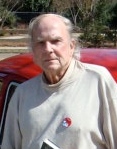- Orbital Gravity in Our 3-Dimensional Universe (2013) [Updated 8 years ago]
- What is Missing From Physical Theory (2010) [Updated 1 decade ago]
- The Orbital Systems of Matter and Its Origin (2010) [Updated 8 years ago]
- Why Hawking and Mlodinow Think the Universe is a Rare Coincidence (2010) [Updated 1 decade ago]
- Holistic Physics in a Self-Organizing Universe (2009) [Updated 8 years ago]
- Orbital Gravity in Our 3-Dimensional Universe (2013) [Updated 8 years ago]
There are two natures: space and matter. Matter in space organizes itself into orbital systems. Particles, atoms, and gravitational systems are orbital systems that form the absolute scaffold of the material universe. Everything in our world originates from it.
- What is Missing From Physical Theory (2010) [Updated 1 decade ago]
The synthesis of particles in the matrix and space as a medium are separated by a limit to a wavelength. Physicists assume that there is no theoretical limit to the frequency of electromagnetic waves. But there is a limit to light's velocity and a limit to its frequency. A wave frequency cannot exceed its rate of propagation.; a wave must move before another can form. There is a threshold, therefore, below which photons are not stable. The limit to the wavelength of a photon is 1/c, or 0.3 X 10-10 cm, and the doublet of photons near this threshold are under internal stress to separate This is why it is no coincidence that the wavelength of a photon with a mass equal to the mass of an electron and positron is only slightly larger at 2.17 X 10-10 cm. Nothing smaller than the threshold can be detected or measured. This then is the boundary between the physical world as we know it and virtual space from which matter and energy emerged.
- The Orbital Systems of Matter and Its Origin (2010) [Updated 8 years ago]
I discuss the basis of holistic physics, in which matter is founded on the principle of the orbital system. Three stages - particles, atoms, gravitational systems - form the scaffold to matter's diversity. The density of the enclosed field of a system is inversely proportional to the system size, with the field content constant for all systems. Space is the nonmaterial medium for light waves and fields. The lower limit to physical reality is the reciprocal of light's velocity 1/c, below which actions are undetectable in virtual space. Protons and neutrons have an orbital system consisting of a nucleus of charged neutrinos surrounded by three shells of virtual photons. Space consists of points, the least bits of cohesion. The spinning oscillating points generate a helical doublet of virtual photons around them that was the basis of orbital systems. The points comprise the matrix and are the cause of its rigidity. In the synthesis of heavy particles astronomically large sections of the matrix rotated and contracted. As the temperature rose, the matrix melted and points fused. Following the explosive eruption the temperature plunged and the matrix again froze to become the medium for light and fields.
- Why Hawking and Mlodinow Think the Universe is a Rare Coincidence (2010) [Updated 1 decade ago]
This short paper critiques Stephan Hawking's and Leonard Mlodinow's 2010 book, The Grand Design, and the assumptions behind their worldview.
- Holistic Physics in a Self-Organizing Universe (2009) [Updated 8 years ago]
Holistic physics is based on our perception of whole systems and patterns. It is hypothesized that matter consists of a hierarchy of orbital systems: particles, atoms, gravitational systems. From the properties of light space is inferred to be a nonmaterial medium. Three laws of Kinematic Geometry and postulates of holistic physics are listed. Holistic physics complements dynamics in defining physical reality.



